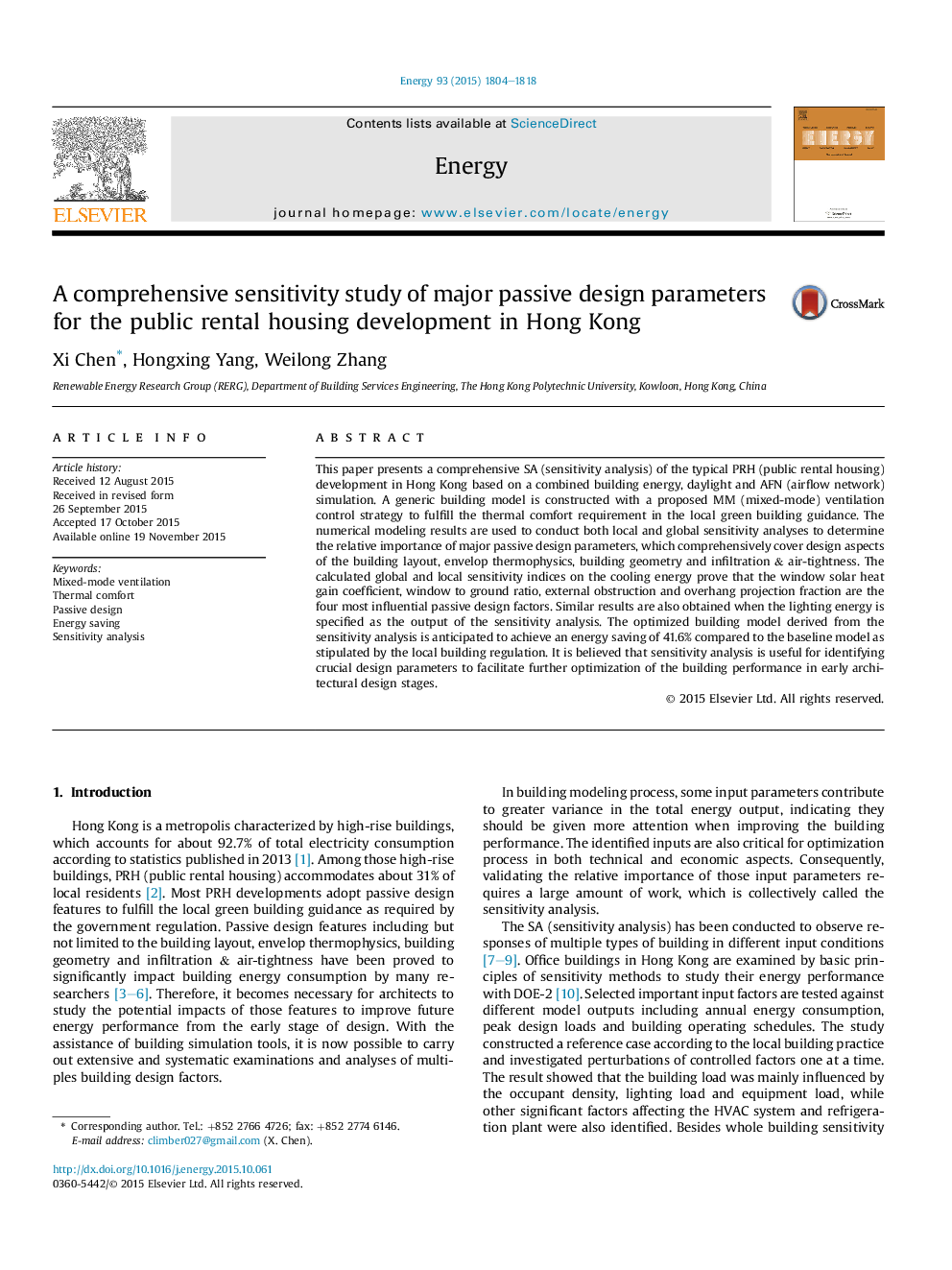| Article ID | Journal | Published Year | Pages | File Type |
|---|---|---|---|---|
| 1731623 | Energy | 2015 | 15 Pages |
Abstract
This paper presents a comprehensive SA (sensitivity analysis) of the typical PRH (public rental housing) development in Hong Kong based on a combined building energy, daylight and AFN (airflow network) simulation. A generic building model is constructed with a proposed MM (mixed-mode) ventilation control strategy to fulfill the thermal comfort requirement in the local green building guidance. The numerical modeling results are used to conduct both local and global sensitivity analyses to determine the relative importance of major passive design parameters, which comprehensively cover design aspects of the building layout, envelop thermophysics, building geometry and infiltration & air-tightness. The calculated global and local sensitivity indices on the cooling energy prove that the window solar heat gain coefficient, window to ground ratio, external obstruction and overhang projection fraction are the four most influential passive design factors. Similar results are also obtained when the lighting energy is specified as the output of the sensitivity analysis. The optimized building model derived from the sensitivity analysis is anticipated to achieve an energy saving of 41.6% compared to the baseline model as stipulated by the local building regulation. It is believed that sensitivity analysis is useful for identifying crucial design parameters to facilitate further optimization of the building performance in early architectural design stages.
Related Topics
Physical Sciences and Engineering
Energy
Energy (General)
Authors
Xi Chen, Hongxing Yang, Weilong Zhang,
